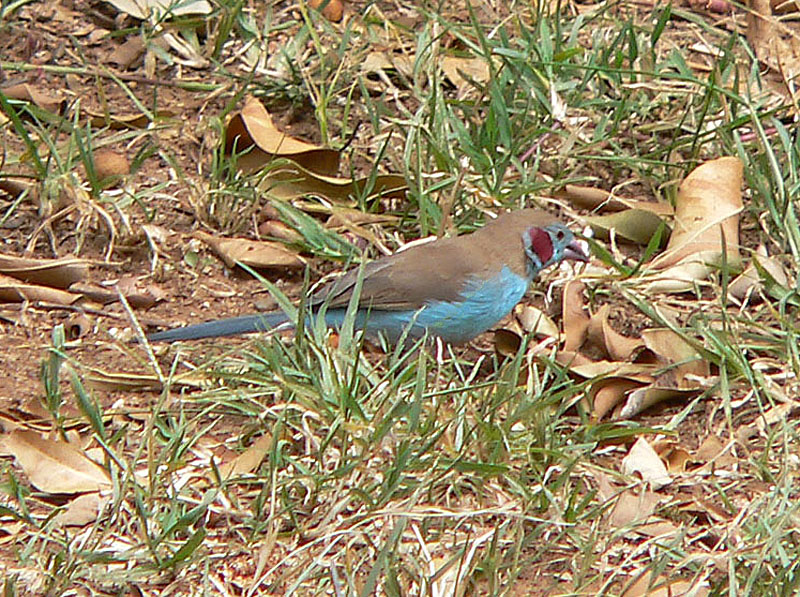These beautiful little finches are among the most popular of the exotic seedeaters, both here and abroad. I highly recommend them to those who have a bit of finch-keeping experience and are looking to expand collections.
Natural History
 Native to sub-Saharan Africa, cordon blues range from Senegal to Ethiopia, and south through eastern Africa to Zambia. They are usually associated with grassland habitats, but frequent farms and villages as well. They are members of the family Estrildidae, the waxbills.
Native to sub-Saharan Africa, cordon blues range from Senegal to Ethiopia, and south through eastern Africa to Zambia. They are usually associated with grassland habitats, but frequent farms and villages as well. They are members of the family Estrildidae, the waxbills.
Cordon blues top out at 4 ½ inches in length, and are clad in fawn brown and sky blue. The beak is red, with a black tip, and males have crimson cheek patches.
Warmth and Large Cages Required
Despite their small size, cordon blues need alot of space if they are to thrive, so provide them with one of our larger finch cages. Hailing from warm, dry climates, they are a bit more sensitive than most finches to cool, damp conditions, and do best at temperatures of 77 F or so.
Insects and Other Dietary Needs
Another thing to bear in mind is their need for a diet rich in insects – they will not do well on a seed-only diet. Small crickets, mealworms, waxworms and wild caught insects (consider using a ZooMed Bug Napper Insect Trap) are all relished. Small canned insects, such as Exo Terra silkworms, and ZooMed Anole Food (dried insects) are also worth trying. A quality finch seed should form the bulk of the diet, and sprouting grass and small amounts of carrot, broccoli and spinach should be provided 2-3 times weekly. Gravel, cuttlebone and a bath should always be available.
Breeding in Nature and Captivity
Cordon Blues will breed readily if provided with a roomy cage, and both sexes sing melodiously. An oven-shaped nest is constructed, and up to 5 eggs may be laid. Both sexes incubate the eggs for approximately 13 days, and the young fledge 17 days after hatching.
Interestingly, wild cordon blues often nest in trees occupied by wasp colonies. I’ll write more about this in the future, but it seems that finches nesting in such trees are twice as likely to be successful in fledging chicks as are birds nesting in trees without wasp colonies – probably because the wasps chase off egg and chick predators.
A number of other waxbills are popular in the pet trade…please write in with your observations and questions. Thanks, until next time, Frank.
Image referenced from Wikipedia Commons and first posted by Christiaan Kooyman.
 That Bird Blog – Bird Care and History for Pet Birds
That Bird Blog – Bird Care and History for Pet Birds
